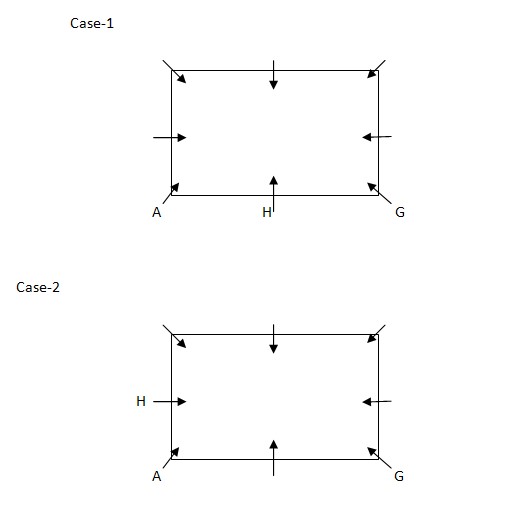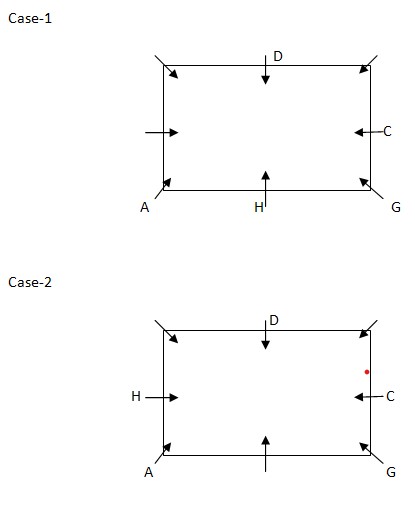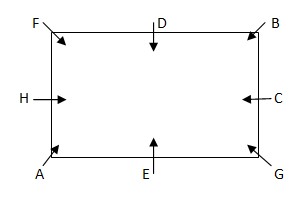Question
Four of the following five are alike in a certain way
and hence form a group. Who among the following person does not belong to that group? Study the following information carefully and answer the below questions Eight persons – A, B, C, D, E, F, G and H are sitting in the square table such that all of them are facing towards the center. Four persons are sitting in the middle of the sides of the table and four persons are sitting at the corner of the table. All the information is not necessarily in the same order. A sits second to the left of G, who sits at one of the corner of the table. H sits either to the immediate right or to the immediate left of A. D sits opposite to the one who sits second to the left of C. C sits in the middle of the sides of table. D is neither the immediate neighbor of G nor A. E is the immediate neighbor of either of A or F, but not the both. B sits second to the left of F.Solution
A sits second to the left of G, who sits at one of the corner of the table. H sits either to the immediate right or to the immediate left of A. From the above condition, there are two possibilities.  D sits opposite to the one who sits second to the left of C. C sits in the middle of the sides of table. D is neither the immediate neighbor of G nor A
D sits opposite to the one who sits second to the left of C. C sits in the middle of the sides of table. D is neither the immediate neighbor of G nor A  E is the immediate neighbor of either of A or F, but not the both. B sits second to the left of F. From the above condition, case1 gets eliminated. Case 2 shows the final arrangement.
E is the immediate neighbor of either of A or F, but not the both. B sits second to the left of F. From the above condition, case1 gets eliminated. Case 2 shows the final arrangement. 
Which of the following was previously a fundamental right but is now only a legal right under the Indian Constitution?
Consider the following statement with reference to the International Council on the Monuments and Sites (ICOSMOS):
1. It is a global inter-govern...
Which writ is issued by a court in cases of illegal detention?
Which article can not be suspended even during the Emergency ?
Which article of the Constitution abolishes Untouchability?
Consider the following pairs of Schedule and Content of the Constitution of India:
1. First Schedule: Forms of Oaths or Affirmations
2....
Presumption is not needed when_________
Which of the following is/are the example/examples of the progress made by Government of union and States in implementing the DPSP?
1. Establishi...
Which of the following Articles of the Indian Constitution grants special provision to the eastern states of India?
Consider the following statements in the context of the Central Information Commission (CIC):
1. The CIC was first constituted as an executive bo...
Relevant for Exams:


